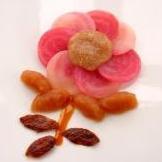4 hours ago, eugenep said:Teo, I didn't read the entire article by Becky put it looks like there are issues of quality and the processing method is cheaper (see quote below). But you are in Europe and likely use Callebaut and I'm in the Americas and I'm using beans from the Americas (El Rey) so there could be personal favorites
I don't have any bias against American chocolate (I would be totally dumb to do so since cacao comes from the Americas). I'm not partial to Callebaut (on the contrary, never been a fan). Simply I don't like when people write negative comments basing them on rumours and not facts. Before bashing somebody / some business it would be better to check the facts.
The webpage you linked is a perfect example of writing stuff without checking facts. My turn to criticize the critic:
4 hours ago, eugenep said:By using unfermented cacao, Barry Callebaut dramatically reduces the cost of its raw material.
The fermentation part of producing chocolate affects the final price for less than 5% (it takes time, yes, but it's unattended time without using machines). Reducing costs for a 5% is pretty far from "dramatically reducing".
Besides that, are we sure that producing ruby chocolate is the same as producing dark chocolate, just only with 2 steps less? No, we can't. Ruby chocolate is produced from peculiar beans that are purple. Those beans must be sorted. Most cocoa plantations have different cocoa varieties planted on them. This means the farmer can't collect all the mature pods from all the trees like they do for dark chocolate, they need to take them from the right trees. After that, most probably they must sort the beans, not just opening the pod and throwing all the beans together. When a pod has purple beans then most of the times it does not contain ONLY purple beans, there are at least the white beans too. So there must be some manual sorting, which most probably affects final costs more than fermentation (which is just done in bulk). There are other additional steps too: as Kerry pointed out, since there is no roasting the producer must process the beans in another way to reduce microbial activity. This is another cost that is present only in the ruby chain of production. So you take out costs from one side, add costs on the other.
If someone does not know these facts, then better not writing those assumptions, because they are based on nothing.
Some other things on that webpage.
She writes "The Switzerland-based company" referring to Callebaut. Too bad Callebaut is based in Belgium (Barry-Callebaut has the headquarters in Switzerland, that is another thing). Someone that makes this mistake looses his/her chocolate credibility in a matter of a second.
She writes "More than the fourth flavor of chocolate, Ruby sounds like a pink cocoa butter with hint of fruitiness." - If so, then the third flavor of chocolate (white chocolate) sounds like what? The taste of white chocolate is given mostly by the milk solids, they do not come from cacao. Ruby chocolate has no milk solids, just like dark chocolate and contrary to milk chocolate and white chocolate. Her sentence simply makes no sense. I stopped here since it's way too long and the few lines I read were so full of basic mistakes that it was just wasted time to continue.
Before claiming to be a "chocolate journalist" someone should study what being a journalist means. First thing a journalist must do is checking sources, a quality that's totally missing in those first lines. Those lines also imply a huge lack of knowledge about basic chocolate notions. It's like someone talking about integrals without knowing what an integer is.
Don't misunderstand me as a ruby chocolate maniac or as a Callebaut fan. I'm neither. On one side I think that the technique for producing ruby chocolate has a lot of potential and can lead to many interesting new things for us pastry chefs (what if they use the same technique but starting only from the white beans? what if they ferment and not roast?). On the other side I don't like how Callebaut is marketing it, they are basing the marketing campaign just like it was a new fashion scarf.
Teo





